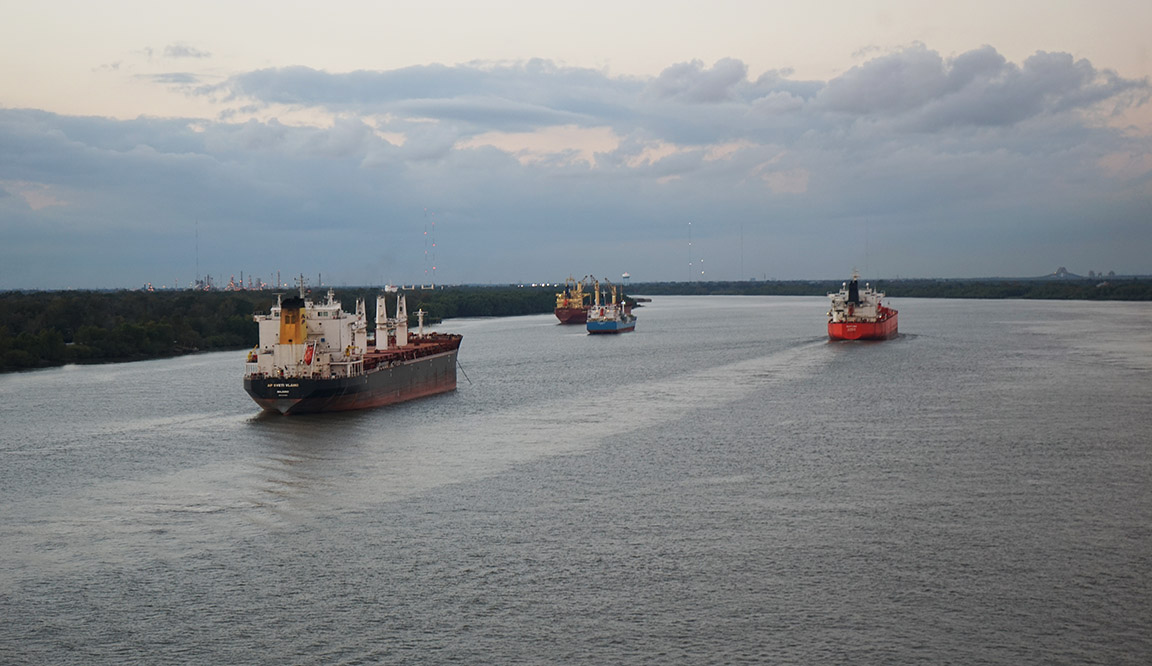
(Photo credit: Iowa Soybean Association)
Inbound containers staying elevated into 2022, congestion limiting ‘larger gains’
October 19, 2021
The National Retail Federation expects imports to the nation’s largest retail container ports to continue at a high clip through at least February. In a Thursday update, the group said its forecasts would have been even higher but congestion, capacity and labor headwinds are limiting throughput.
“The cargo is there for larger gains at several ports but congestion issues are impacting fluid operations,” said Jonathan Gold, NRF’s vice president of supply chain and customs policy.
Final numbers for August didn’t produce a new monthly record as expected. The ports tracked by the NRF handled 2.27 million twenty-foot equivalent units in August, up 3.5% sequentially and 7.8% year-over-year. That was tied for the second-busiest month in the dataset’s 20-year history.
May produced the highest monthly throughput on record at 2.33 million TEUs.
Congestion and bottlenecks were the reasons for the August shortfall.
“Just when we thought things couldn’t get any worse with the logistics supply chain, we’ve been proven wrong,” said Ben Hackett, founder at Hackett Associates, which works with the NRF to forecast future container throughput at the ports. Hackett called out numerous issues from port shutdowns in Asia to congestion and a lack of drivers and equipment in the U.S. as the reasons.
For months now, ships have been waiting longer for berths at the ports and freight is being further delayed once it has landed. A lack of equipment, truck capacity and labor have impacted fluidity throughout the supply chain. Delays unloading containers at warehouses as well as a lack of industrial space to store them have caused most points in the flow of goods to consumers to become pinched.
Further, a high level of consumer spending and retailers still catching up on and pulling forward inventory has the NRF calling for the current dynamic to remain in place through at least February, its last month forecasted.
The group’s preliminary expectation for September, as numbers are not yet final, calls for a 6.7% year-over-year increase to 2.25 million TEUs. October is forecast to decline 0.3% compared to a very strong comp from 2020, “when imports surged dramatically … and retailers rushed to meet pent-up consumer demand.” That would be the first monthly decline since July 2020.
November (+2.9%) and December (-0.2%) round out the forecasts for the year.
Growth expectations for January (+5.7%) and February (+1.4%) compare to tough comps from a year ago; +13.2% and +23.8% in January and February 2020, respectively. Those comps weren’t really impacted by COVID shutdowns as it was March 2020 when Asian factories didn’t come back online after the Lunar New Year holiday.
The NRF’s new full-year 2021 forecast was raised 50 basis points from last month’s expectation. This year is on pace to see container throughput of 26 million TEUs, up 18.1% year-over-year and a new annual record.
Source: FreightWaves
Back